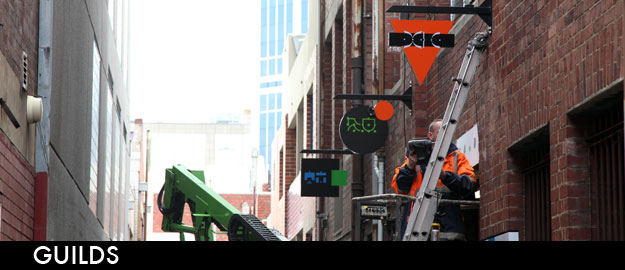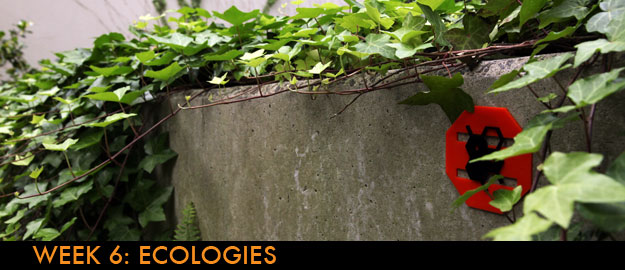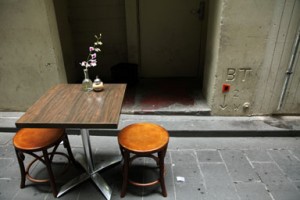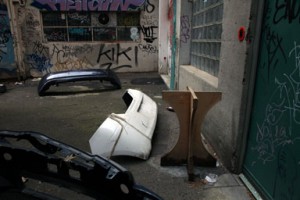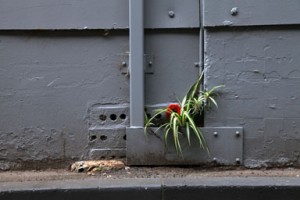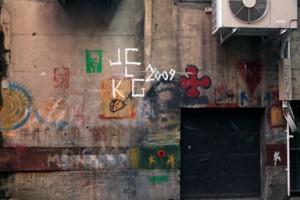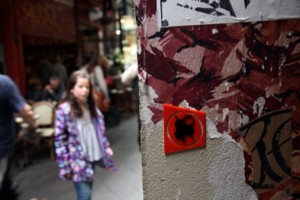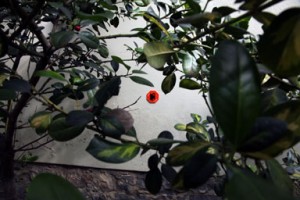The Master Codemaker takes a spatial approach to urban codemaking. Seeing the role of the urban designer to put in place codes that inform people without words: nonverbal and visual signs that control and regulate the use of space. He creates both visual codes, spatial codes and behavioural codes that are designed to work together to form a new language – this may be the ‘Third Language’ evolving from evolution’s third replicator: genes, memes, and …
MASTER CODEMAKER
CROSSMEDIA ECOLOGIST
Officially, there are eight guilds within the Urban Codemakers group. There are rumours of a ninth. Of the eight official guilds, three have emerged as the most active over the past month, namely the Master Codemaker, Locative Urbanist and Crossmedia Ecologist. Their musings on our blog reveal distinctly different views on the nature of urban codemaking from each of these three guild masters.
The Crossmedia Ecologist takes an ecological view on urban codemaking. Seeing urban spaces as networks of forces, some social, some economic, others material or information based in their nature. It is somewhat between a traditional ‘village’ based view – letting spaces grow of their own accord – and seeing urban designers as being responsible for nurturing, rather than controlling, spaces. Making them liveable and functional.
Noise
 There is nothing the Crossmedia Ecologist hates more than a smug technocrat particularly when there is bite to their bark. So the Locative Urbanist sees our work as mere noise, a cacophony of competing ideas! We however see it as a smorgasbord an eclectic mix of possibilities, of pathways, of choices, stories of competing voices.
There is nothing the Crossmedia Ecologist hates more than a smug technocrat particularly when there is bite to their bark. So the Locative Urbanist sees our work as mere noise, a cacophony of competing ideas! We however see it as a smorgasbord an eclectic mix of possibilities, of pathways, of choices, stories of competing voices.
So the rules don’t always add up but it depends on which game ‘you’ are playing. To the rules you choose.
So we walk the city as protest. And this walk raises new questions for the city designers.
Should urban designers deliberately create better spaces for the exercise of democratic protest?
But surely the role of the protest is transform urban space to disrupt the hegemonic regime?
I do want to disrupt the commuter with my civic despair. What point a protest without appropriating the city, or perhaps conquering it but for a brief moment?
Contemplate Hausmanns’s famous redesign of Paris in 1852 – 1870 whose magnificent boulevards supported Napoleon III’s militaristic regime with the clearing of the narrow streets to provide streets wide enough for troops to march down and water cannons to be fired to suppress riots. In 1969 to the police used a bulldozer and the cover of a massive cloud of tear gas to move protesters who had felled trees across San Michel Boulevard – in France’s second most famous revolution against class discrimination.
But here for my friend, who may be yet my greatest ally I offer the chance to create a city in perfect harmony …
Isle of Tune: A musical sequencer for the modern colonial
http://isleoftune.com/
Way of the Ecologist
Active in the city this week. Some rough field notes here. Thoughts and sketches as I work my way through fieldwork into something coherent and tangible for the urban planning proposal due next month for the City of Melbourne. And I was going to retire to the country for the summer. Or work on my other blog…
So, fieldwork journal entry 001.
1. What is the environment like?
The City of Melbourne is a dynamic urban environment characterised by the contrast between its iconic grid design (a planned city) and emergence of many human-sized networks (the laneways). This allows for the co-existence of large buildings supporting business and corporate entities alongside smaller communities of restarants, cafes, small businesses, bars and so on. It is a thriving community with an active (and well established) street art scene. Much of this is emergent (such as the ‘new’ Guildford Lane Art precinct) as much as it is planned – the partial closure of Swanston St for example.
2. Fieldwork
My brief is to: Identify sites that provide suitable habitats for play by urban entities. In my view of the city I see play as the ‘immune system for the city’.
My approach to sampling was to consider the crossover between two sets of factors: firstly, organic ecologies versus social ecologies (two different types of habitat); and secondly, those with emergent properties versus those that are cultivated. On this second point, there seems to be an equal share of both and perhaps the unique layout of Melbourne provides a fertile environment for this to occur (shift that to data analysis).
So, this week I will find habitats for ecologies of play and tag them for people to find. The results so far have been published by the Urban Codemakers.
3. Finding more data
Are there other cities that have a similiar host environment? There may be something to be found in the archives of the Urban Ecology Institute. Useful data may be found in ‘Ecology of Cities and Towns’ published by the Australian Research Centre for Urban Ecology. However, all these are exploring organic ecologies – what of emergent ecologies of media that grow amongst the multitude of connections in the city? Across mobile phones, social networks, urban games – the ways people play in urban space – the potential of pervasive games and urban role-play. Or just old school games of hopskotch and tag?
4. Data analysis
My process is similiar to the other codemakers. Not as pretentious as the Codemaker or as dependent on technology as the Urbanist (who is threatening a virus?). Perhaps a little more random or chaotic? Anyways, here is the five step program:
[i] Identify sites that provide suitable habitats for play;
[ii] Tag those sites with IDEOTAGs denoting portals, ecologies or entities (signs of life);
[iii] Invite guild members to find these sites and observe them. Post their own findings…
[iv] Collate the resulting relationships to identify fertile zones in the city.
[v] Publish these findings to the authorities and propose rezoning (new zones?)
5. Review
Ok, so this data is pending review. We will see what the players come up with. Two operatives are also in action on this one. The first operative was the first to start tagging.
And there are more sites to find later this week…
Week 6: Ecologies
Play is the immune system of the city – to enjoy, feel safe and feel free to play in public space is essential. The Crossmedia Ecologist has tagged sites that provide suitable habitats for play by urban entities.
Habitats for ecologies of play. Both natural and artificial: emergent ecologies, cultivated ecologies.
Urban ecologies. Crossmedia ecologies. The cycling of media and flow of energy through an ecosystem.
The Crossmedia Ecologist studies the relations of urban organisms to each other and their surroundings. Crossmedia ecologies create feedback loops between memes and entities in a live communication system. Through her work hierarchies of pattern and process can be identified through the ways we play in the city.
Transmedia communication thrives on a diversity of media and generative arrangement of message types, forms and interactions. The flow of people’s attention through these networks feeds crossmedia ecologies. People play, langauges grow.

